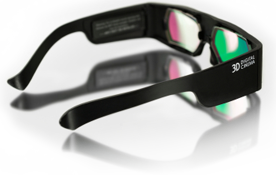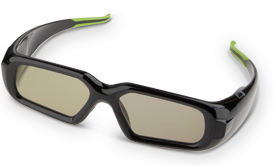3DTV
Stereoscopic 3D is the hot new thing in movies. Fans have shown that they’re willing to pay more to see 3D versions of movies such as Avatar and Up. Now the same 3D effects are available on HDTVs. Whether in the local cinema or in your living room, 3D displays work the same way. They present different images to your left and right eyes at the same time. Your brain then combines these images to create the illusion of three dimensions.
An HDTV that can show 3D images can also show standard 2D images, which means that buying a 3D HDTV can help future-proof your purchase in case 3D becomes pervasive in television. (Some 3D movies are available on Blu-ray, but they require a 3D-capable Blu-ray player, and some services such as ESPN and DirecTV already are experimenting with broadcasting 3D content.) There are three approaches to 3DTV technology, which you should understand before investing in this evolving category.

Passive Glasses
This is the approach used in your local cinema. You wear a special pair of inexpensive glasses that have polarized lenses. The left lens only lets through a certain type of polarized light, and the right lens accepts a different polarized light. This same effect can be achieved with a flat screen HDTV, but it requires additional materials and very precise manufacturing processes. The result is a costly HDTV. As of press-time, no passive-glasses HDTV models are available, although a few TV manufacturers are demonstrating them.

Active Glasses
Active glasses have LCD panels as lenses, which alternate images in your left and right eyes. If done fast enough—60 times per second for each eye—your brain will combine the images to create smooth motion in three apparent dimensions. This technology is relatively easy to implement in an HDTV capable of a 120Hz refresh rate, which includes most LCD HDTVs. The extra cost is in the glasses, which are more complex than the polarized lenses used in movie theaters.

No Glasses
Many consumer surveys report that people want 3DTVs, but they don’t want to wear glasses. Unfortunately, these people will have to wait for a glasses-free 3D experience. HDTVs have been demonstrated that can create the stereoscopic effect without glasses, but they are still in development.



